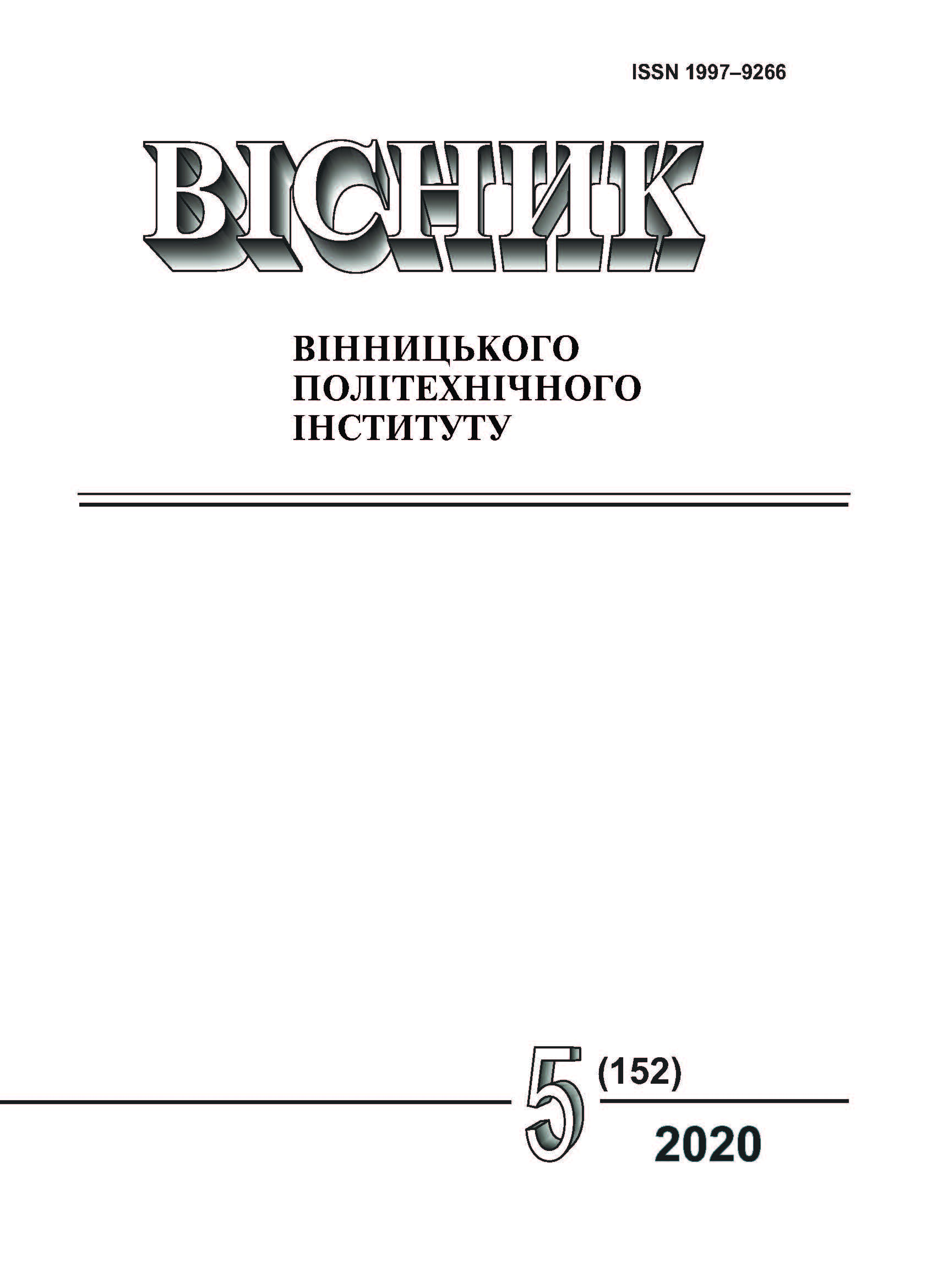Potential of Biogas Technology in Vinnytsia Region
DOI:
https://doi.org/10.31649/1997-9266-2020-152-5-41-48Keywords:
biogas technology, energy potential, ecological and social effect, energy effect, economic effect, methanogenesis, cofermentationAbstract
Methods of obtaining energy from biomass are analyzed. It is stated that biogas technologies will soon become a mandatory element of livestock, agro-processing, food and other enterprises. It has been established that the replacement of fossil fuels with renewable energy sources has economic, environmental and social benefits.
The components of the complex effect of the biogas plant are analyzed. The analysis of statistical information is carried out and the dynamics of change of livestock in Vinnytsia region is estimated. Groups of factors influencing the intensity of biogas production and its quality are systematized, namely biological, physical, chemical and organizational-technological.
The influence of different types of raw materials is analyzed, their rational ratio is indicated taking into account the increase of biogas yield, improvement of its quality, the criteria according to which raw materials for biogas plants should be selected are indicated. Attention is paid to the processes of joint fermentation of livestock waste with vegetable raw materials; the effects of increasing the yield of biogas during cofermentation are given.
The model of annual potential of biogas technology is formulated, on the basis of which the annual potential of Vinnytsia region is developed. The livestock as of 01.05.2020, the volumes of sugar production from sugar beet and alcohol in 2019 are taken into account. The potential of biogas production from livestock waste, sugar and alcohol production has been established.
The energy effect of biogas technology, which includes the production of high-calorie energy, heat and electricity during its utilization, is determined. The energy potential of biogas technology is sufficient to cover the heat and electricity needs of Vinnytsia region for the main types of economic activity. The economically feasible potential has been determined according to the recommendations of the Bioenergy Association of Ukraine.
Technological solutions to increase the efficiency of the biogas plant are proposed, namely the return to the technological process of the biogas plant liquid phase (fraction) in the amount of 10… 50 % of the obtained from the spent substrate, which saves up to 70 % of fresh water at stationary loading intervals bioreactor.
A method for determining the complex effect of biogas technology based on the calculation of the energy effect and taking into account expert assessments of the ratio of energy, economic and environmental and social effects is proposed. It is indicated that this method of estimating the complex effect allows drawing a conclusion about the expediency of conducting a detailed technical and economic analysis of the future biogas plant under specific conditions.
References
Г. С. Трипольская, та ін., «Біогазові проекти в Україні: перспективи, наслідки та регуляторна політика,» Економіка прогнозування, № 2, с. 111-134, 2018.
Г. Г. Гелетуха, Перспективи біогазу в Україні. [Електронний ресурс], Режим доступу: https://www.epravda.com.ua/rus/columns/2013/07/3/383399/ .
«Тваринництво України 2017,» Статистичний збірник. Київ, Україна: Державна служба статистики, 2018, 165 с.
Головне управління статистики у Вінницькій області, Кількість сільськогосподарських тварин у 2020 році. [Електронний ресурс]. Режим доступу: https://www.vn.ukrstat.gov.ua/index.php/statistical-information/6595-kilkist-sg-tvaryn.html .
А. С. Добышев, А. А. Острейко, «Подбор и подготовка животноводческого сырья для биогазовых установок,» Актуальные проблемы интенсивного развития животноводства, сб. научн. тр. Горки: БГХСА, вып. 16. с. 394-401, 2013.
Г. В. Біньковська, Т. П. Шаніна, «Відходи рослинництва у сільському господарстві Одеської області: перспективи для виробництва біогазу,» Український гідрометеорологічний журнал, № 16, с. 107-111, 2015.
П. Ю. Галицкая, П. А. Зверева, С. Ю. Селивановская, «Совместная утилизация отходов различных производств с получением полезных продуктов и биогаза,» Ученые записки Казанского университета, т. 153, кн. 1, с. 152-160.
D. M. F. Lima, “Anaerobic Modeling for Improving Synergy and Robustness of a Manure Co-Digestion Process // Brazilian Journal of Chemical Engineering, no. 4, pp. 871-883, 2016.
П. П. Кучерук, Ю. Б. Матвєєв, Т. В. Ходаківська, «Дослідження ефективності метаногенезу при анаеробному зброджуванні гною ВРХ з рослинними рештками,» Відновлювальна енергетика, 20, № 1, с. 83-89, 2010.
Б. Баадер, Е. Доне, М. Брендерфер, Биогаз: Теория и практика. Москва: Колос, 1982, 148 с.
С. Й. Ткаченко, Н. В. Пішеніна, Нові методи визначення інтенсивності теплообміну в системах переробки органічних відходів: моногр. Вінниця, Україна: ВНТУ, 2017, 147 с.
С. Й. Ткаченко, Н. Д. Степанова, Н. В. Резидент, Д. І. Денесяк, К. О. Іщенко, «Однопрохідний біореактор біогазової установки,» Патент 125227 UA, МПК C02F 11/04, № a 2017 12221 ; заявл. 11.12.2017 ; опубл. 10.05.2018, Бюл. № 9.
С. Й. Ткаченко, К. О. Іщенко, «Економія води в технологічних процесах біогазової установки,» Scientific Works, т. 81, № 2, с. 125-130.
В. Г. Некрасов, «Перспективы использования биогаза,» Техника в сельском хозяйстве, № 4, с. 25, 1988.
В. В. Гимпель, «Экологическая эффективность внедрения биогазовых установок в Украине,» Экология плюс, № 4, с. 23-29, 2015.
С. Й. Ткаченко, Д. В. Степанов, Н. Д. Степанова, «Аналіз соціальної та енерго- і природозбережної ефективності реалізації біогазової технології,» Вісник Вінницького політехнічного інституту, № 2, с. 34-41, 2020.
Г. Г. Гелетуха, П. П. Кучерук, Ю. Б. Матвеєв, Перспективи виробництва та використання біогазу в Україні. Аналітична записка БАУ № 4. [Електронний ресурс]. Режим доступу: https://uabio.org/wp-content/uploads/2020/04/position-paper-uabio-4-ua.pdf
Downloads
-
PDF (Українська)
Downloads: 267
Published
How to Cite
Issue
Section
License

This work is licensed under a Creative Commons Attribution 4.0 International License.
Authors who publish with this journal agree to the following terms:
- Authors retain copyright and grant the journal right of first publication.
- Authors are able to enter into separate, additional contractual arrangements for the non-exclusive distribution of the journal's published version of the work (e.g., post it to an institutional repository or publish it in a book), with an acknowledgment of its initial publication in this journal.
- Authors are permitted and encouraged to post their work online (e.g., in institutional repositories or on their website) prior to and during the submission process, as it can lead to productive exchanges, as well as earlier and greater citation of published work (See The Effect of Open Access).





